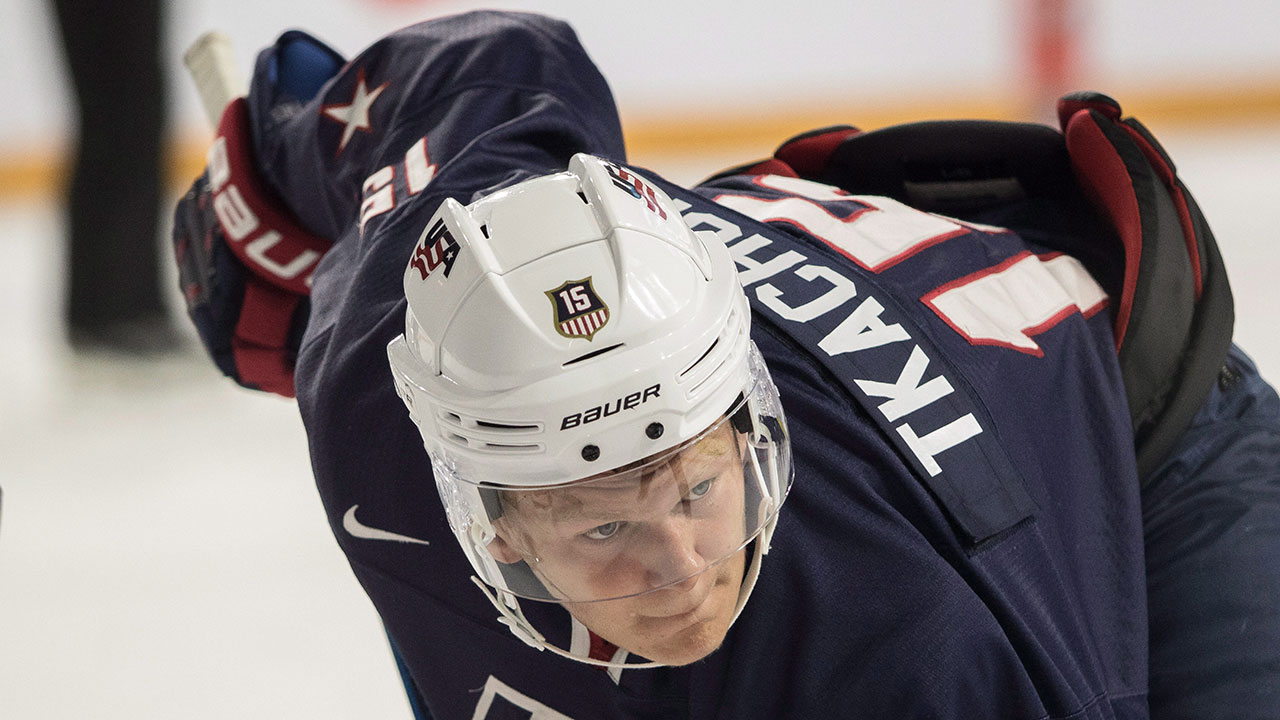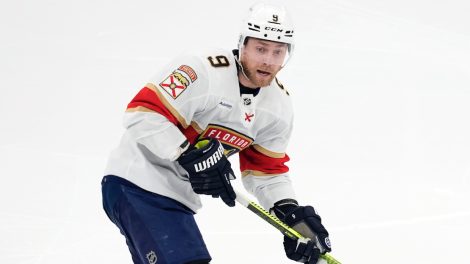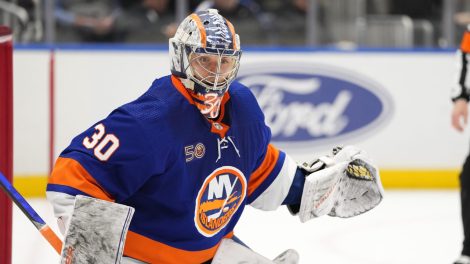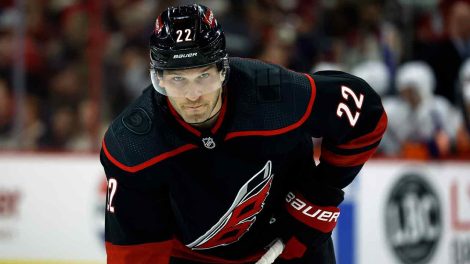With the NHL set to return to play next week after more than four months off, it’s tough to know how much the regular season will factor into what we’ll see in the playoffs.
Older players are more rested entering the playoffs than ever before, rookies have had time to add the bulk we would only have seen at a 2020-21 training camp, and at any point, an impactful player could test positive for COVID-19 and be sidelined. All signs point to this being the least predictable playoffs we’ve ever seen.
So…let’s make some predictions!
Using the data we have from the 2019-20 season, we can make our best bets on how things will play out in the qualifying round that starts Aug. 1. This is such an unprecedented season, though, that we have no idea how relevant this data really is right now. But that’s half the fun, right? Let’s see how well we can do with some of these predictions.
The Minnesota Wild will upset the Vancouver Canucks
This is maybe not the most shocking way to start if you pay attention to analytics, but I’ve gotta dip my toe in the water first.

So much of this matchup is dependent on goaltending. Jacob Markstrom was superb in the regular season before being injured, and Devan Dubnyk might have been the worst starting goaltender in the league.
With Markstrom coming back from injury and Dubnyk able to rest and possibly shake off the brutal season he just had, it’s tough to know if we’ll see the performance we expect from either goalie.
The Wild aren’t a great team in general but they are the best team in the league at protecting the most dangerous area in their own zone, which gives their goaltenders easier shots to face than pretty much any other team in the league. The amount of control Minnesota exerts on the inner slot area is only rivalled by the league’s top Stanley Cup contenders, but they’re just not special in most other areas.
The Canucks, meanwhile, were driven by their incredible power play and Markstrom’s consistent excellence, so they were able to paper over extremely underwhelming performance at 5-on-5, including league-worst control over rush chances. They’re lucky they didn’t draw in against a great rushing team, but if the Wild focus their attack on that area, this series could be over quickly.
If the qualifying round is officiated as loosely as it usually is in the playoffs, Vancouver’s incredible top power play unit will have less impact as well, which makes this even more of an uphill climb.
[snippet id=4167285]
The Chicago Blackhawks’ regular season wins over the Edmonton Oilers mean nothing
Regular season head-to-head matchups are always a bit of a dicey way to break down a playoff matchup. Things are so different in the post-season, but seeing some people fret on Twitter about Edmonton’s matchup against the Blackhawks makes me think they’re drastically overvaluing the results of a couple games played months ago.
The Oilers are an average to below average team with two of the sport’s most dazzling offensive stars pulling them into “good” status, so if they play against a well-rounded team that can shut things down defensively, they might be in tough.
The Blackhawks though? Their defensive numbers leave a lot to be desired. Slot passes against? Ranked 31st. Rush passes against? 30th. Inner slot shots against? 31st. Slot shots against? 31st. Total slot shot attempts against? 31st, and a 100 more allowed than the next worst team. Rush chances against? 29th.
Chicago can generate a lot of offence, but if they want to go up against the Oilers playing a run and gun style, I think the combination of Dave Tippett’s tactics and the presence of both Connor McDavid and Leon Draisaitl is going to burn them up.
If Juuse Saros struggles and the Nashville Predators turn to Pekka Rinne, he’ll be fine
Much was made of Pekka Rinne’s struggles this season, and on the surface his .895 save percentage at 37 years of age would make you assume that he’s fallen down the proverbial elevator shaft.
The truth is Rinne’s struggles have been extremely odd this season, because they’ve only come from one specific area. At 5-on-5, among the 35 goaltenders who have played at least 1,500 minutes in 2019-20, Rinne finished tied for sixth in save percentage from the inner slot with a stellar .825, 10th in slot save percentage at .854, and middle of the pack overall at 18th with a .923. So why is his overall save percentage so low?
It’s because, from the inner slot in shorthanded situations, Rinne has posted the worst save percentage in the league by a drastic margin. The tiny fraction of shots Rinne has faced from that area in shorthanded situations drops his numbers from respectable to terrible.
We have to look at all shots a goalie faces to properly evaluate them, but this is such an egregious outlier that it’s hard to believe it will continue. In just 36 shots faced from the inner slot while his team was shorthanded, Rinne allowed 16 goals, 15 per cent of all the goals he allowed this season. Outside of that area, Rinne was decidedly above league average. We can’t discount those results, but it seems unlikely he would struggle that much.
Considering there are fewer power plays in the playoffs as well don’t be surprised that, if Rinne plays, he gives the Predators a good chance.
[snippet id=3816507]
Sebastian Aho and William Nylander are going to score a lot
Aho had his coming out party as a franchise player in 2018-19 and had a decent playoff on top of it, but both he and Nylander have changed up their shooting games this season, leading to higher scoring rates than ever before.
Only Brady Tkachuk and Kyle Connor put more shots on net from the inner slot than Aho did in 2019-20, and Nylander was right behind him. Of Aho’s 38 goals this season, 30 were scored from in tight. Of Nylander’s 31 goals, 24 of them were scored from the inner slot.
The ability to get in tight and battle for pucks is huge in the playoffs, and these are two mega-talented shooters who have started to get to the net-front like fourth line grinders.
Beware of Anders Lee
A 20-goal season — on pace for 24 — wouldn’t be a disappointment for most people, but Anders Lee scored 102 goals over his previous three seasons, so his standard is higher than average. It’s not like he didn’t put in the work either. He was top-10 in inner slot shots this season, but he’s scored just eight goals from there, finishing only 10 per cent of the time whereas an average forward scores at nearly twice that rate from there.
In 2018-19 Lee scored on 23 per cent of his inner slot shots, and in 2017-18 he scored on 29 per cent of those shots. I don’t think Lee’s shooting talent has been cut by at least half since the end of the 2018-19 season, so he’s overdue for a lot of goals.
[relatedlinks]








